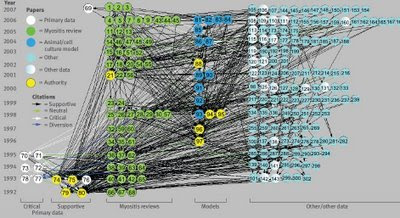I submitted
this paper to
JEEM today. It follows up on
a paper published earlier this year in the journal by Vollebergh et al. They argued that existing estimates of the
environmental Kuznets curve are contingent on the treatment of the "time effects". Traditional panel data regression estimators assume that there is a different intercept for each country and often that there is a intercept for each time period which is common to all countries. Instead, one could assume that there is a different linear time trend in each country. Neither assumption though is likely to be true. In general the state of technology will be a different "stochastic trend" in each country.
Vollebergh et al. address this problem by assuming that the time effects (and the function of income) are the same in each most similar pair of countries in the OECD. For example, Belgium and the Netherlands. This allows a lot of heterogeneity across countries. But it isn't entirely unconstrained.
My approach is to use the "between estimator". First we find the mean of each variable over time in each country and then we carry out the regression on the means. The time effects are thus converted to constants (and any serial correlation in the residuals is also wiped out). We can, therefore, estimate the long-run coefficients of the model while making no assumptions about the nature of the time effects or the residuals.
This chart shows the time effects estimated using the between estimator for sulfur emissions in the OECD (I only show twelve of the trends to keep things simple):

(the y-axis is measured in natural logarithms). The lower the trend is the cleaner the country is on an income-adjusted basis. The results are pretty similar to those in
my 2005 paper where I used a much more complicated structural time series model of a production frontier to estimate the trends.
Applied econometricians have largely shunned between estimates because either they think that they throw away a lot of information (I used to be in this camp) or they are worried about a potential correlation between the residuals and the regressors due to omitted variables. However, econometric research, discussed in the paper, shows that the traditional fixed effects estimator is just as likely to suffer from this problem and that the between estimator performs very well in realistic Monte Carlo simulations.
I'm planning to use this estimator for my ongoing
Environmental Economics Research Hub project.












